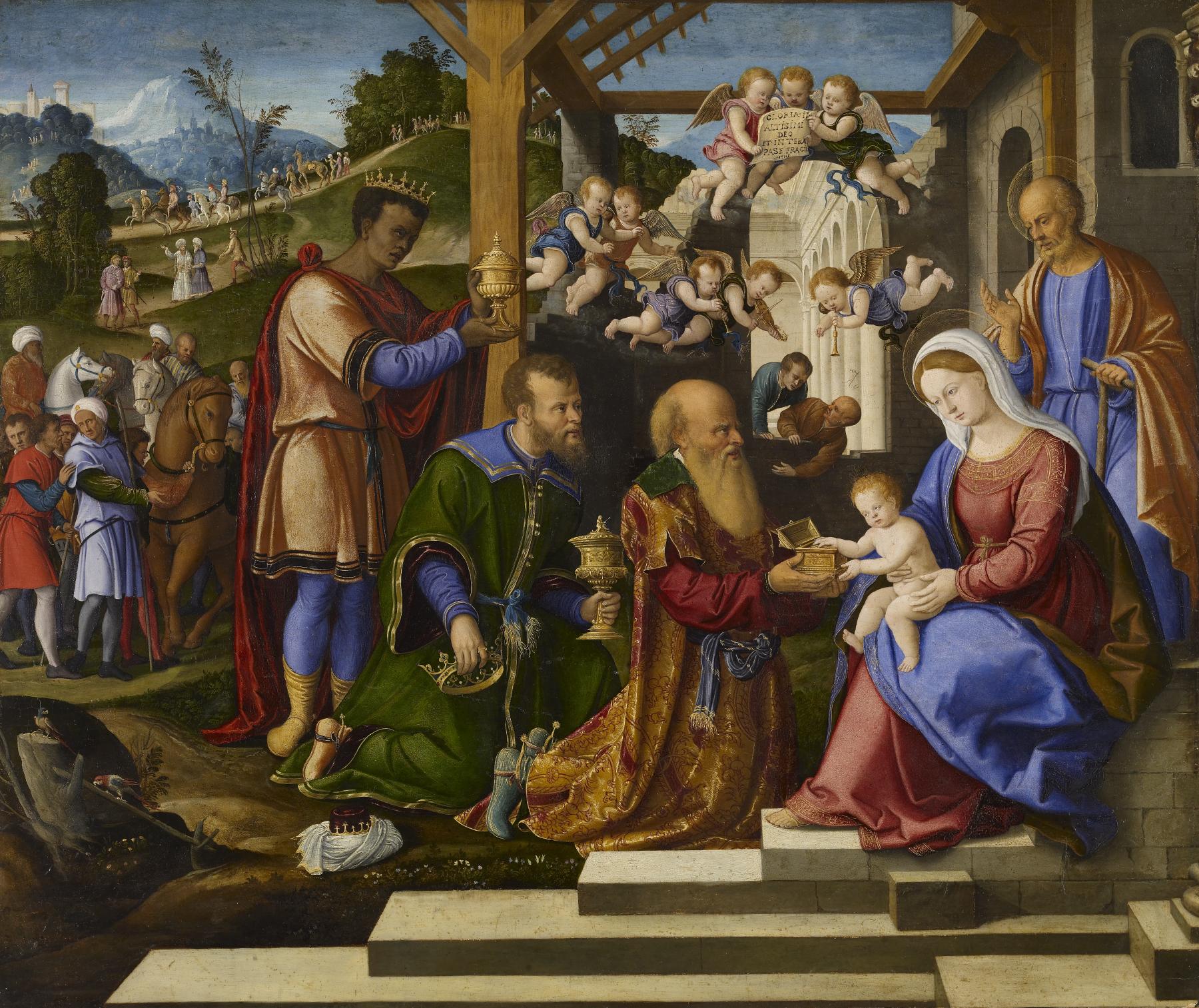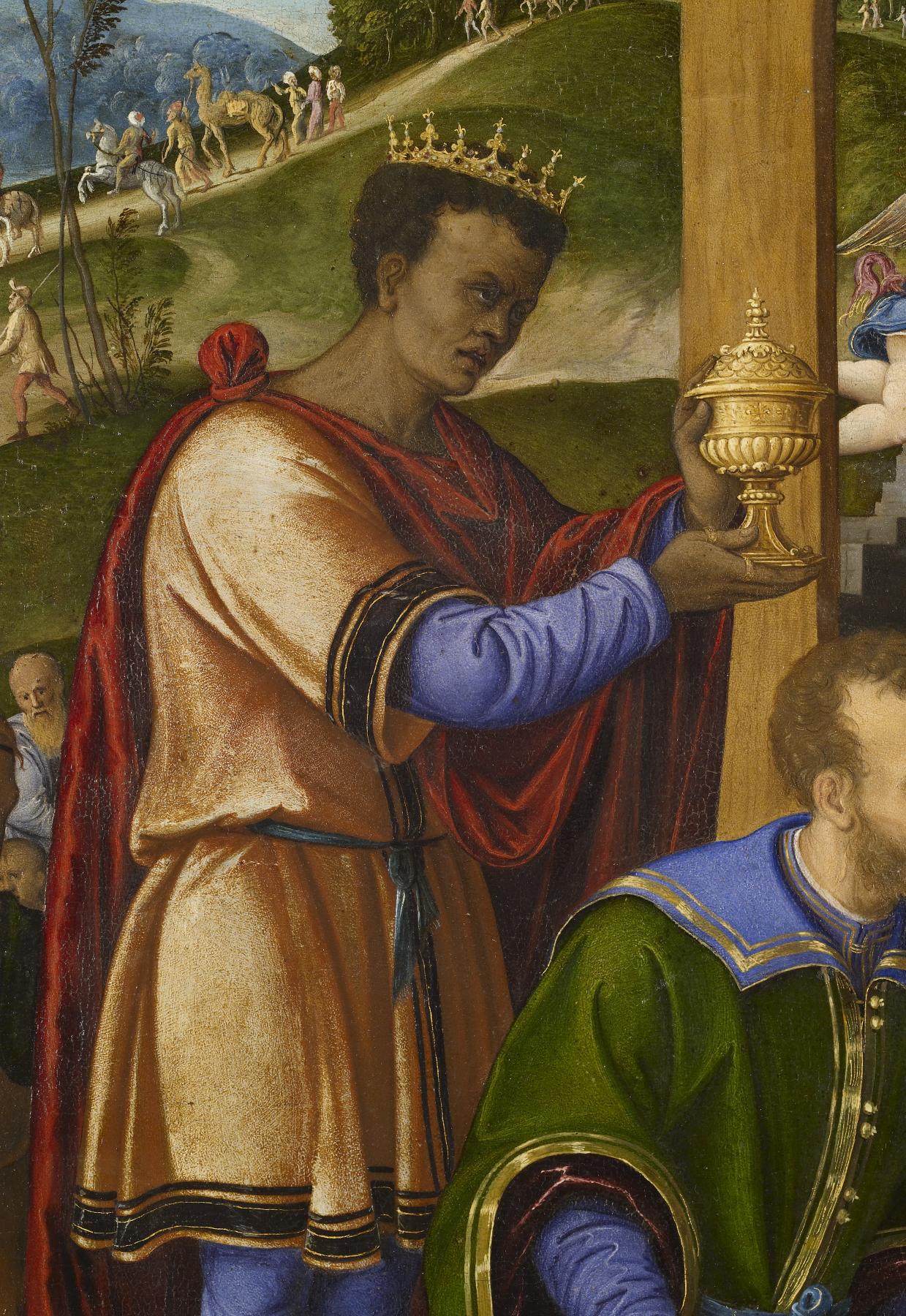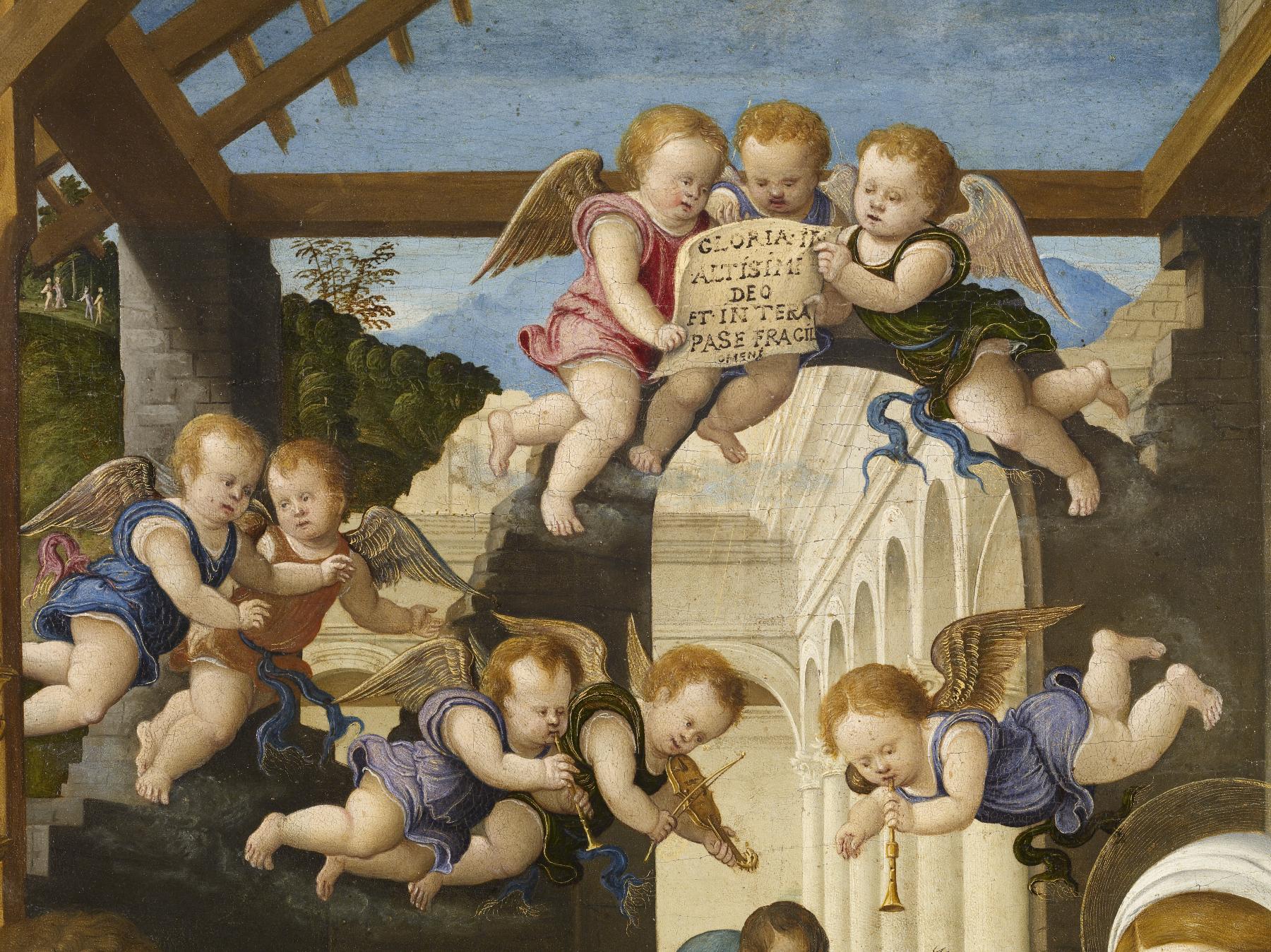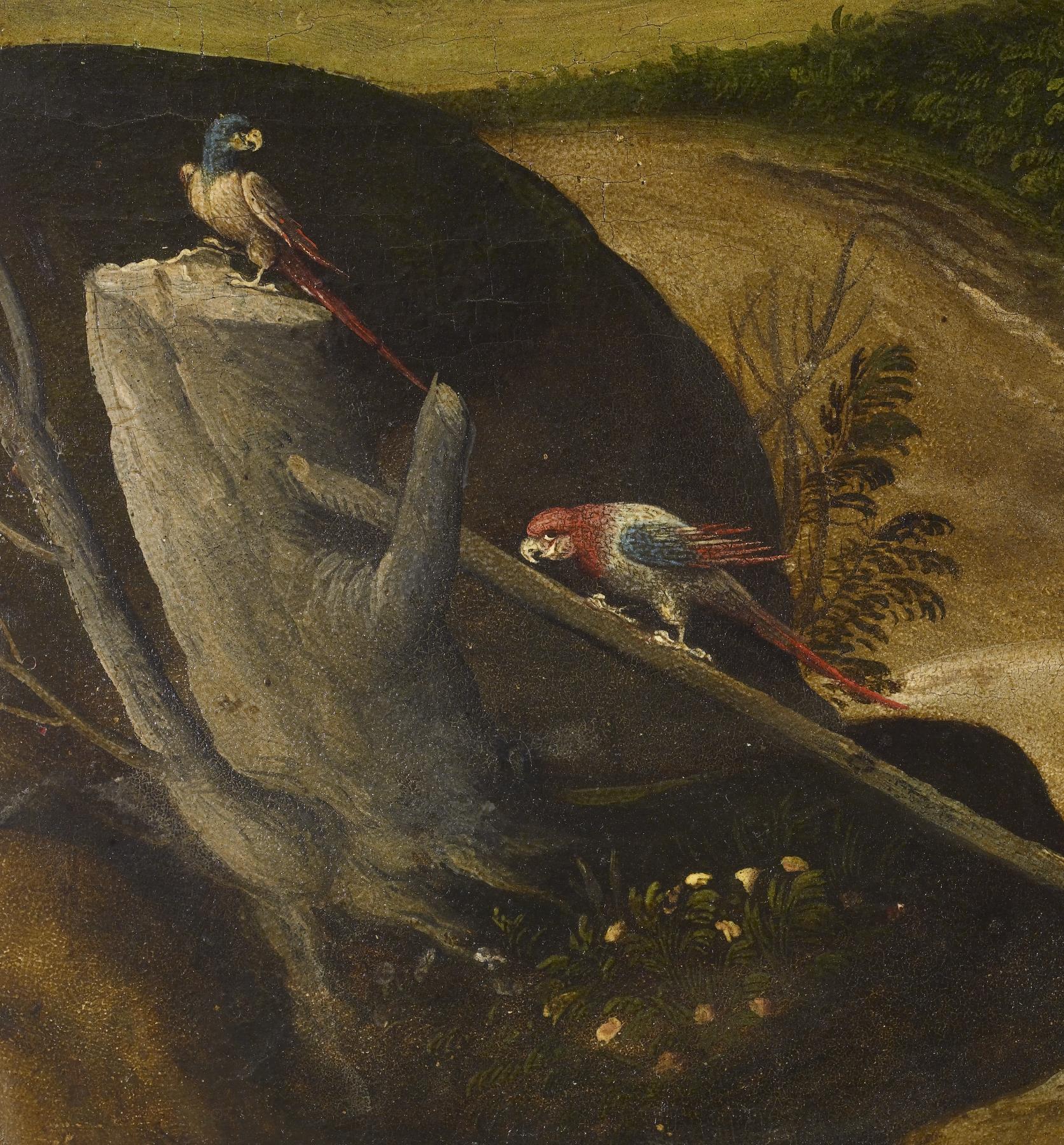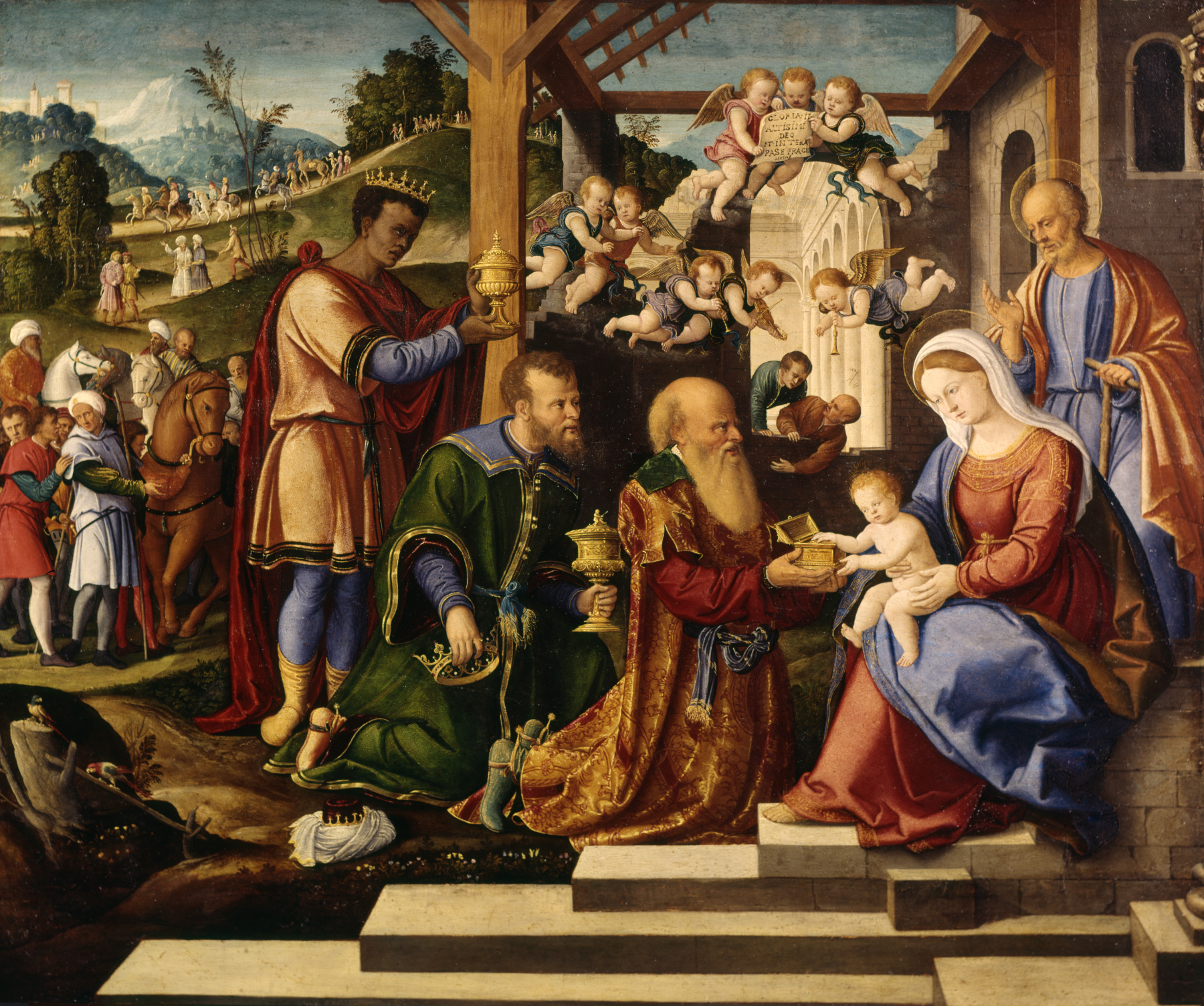The Adoration of the Three Kings
(Renaissance Europe )
Three wise men, or magi, are described in the Gospels as having seen a new star and journeyed “from the East” to pay tribute to the child marked as divine in the heavens. These wise men were often portrayed as kings, and by the Renaissance the youngest was frequently depicted as an African, seen here holding a gold vessel containing myrrh, a precious resin from Arabia and Africa used for perfume. By representing the kings as coming from a variety of cultures, this imagery reflects the concepts that all peoples acknowledged Christ’s lordship and that Christ’s promise of salvation was for all people. This painting was created in Renaissance Venice, a port city whose ethnically diverse population included North African and Ottoman merchants and diplomats, Ethiopian scholars, local Black tradesmen, as well as enslaved persons of various origins. The model was therefore probably studied from life.
The splendor of the kings contrasts with the simplicity of the Holy Family. Chubby little angels sing the words inscribed on the scroll, “Glory to God in Heaven and Peace to Men on Earth,” accompanied by others playing flutes and a violin.
Inscription
Provenance
Provenance (from the French provenir, 'to come from/forth') is the chronology of the ownership, custody, or location of a historical object.
Pinacoteca Manfrin, Venice, prior to September, 1872 [cat. no. 51] (?); Don Marcello Massarenti Collection, Rome [date and mode of acquisition unknown]; Henry Walters, Baltimore, 1902, by purchase; Walters Art Museum, 1931, by bequest.
Exhibitions
| 2012-2013 | Revealing the African Presence in Renaissance Europe. The Walters Art Museum, Baltimore; Princeton University Art Museum, Princeton. |
Conservation
| Date | Description | Narrative |
|---|---|---|
| Examination | examined for condition | |
| 1/1/1900 | Examination | examined for condition |
| 7/14/1938 | Treatment | cradle removed; other |
| 11/3/1975 | Treatment | cleaned; coated; filled; inpainted; varnish removed or reduced |
| 10/24/2011 | Examination | examined for loan |
Geographies
Italy, Venice (Place of Origin)
Measurements
Painted surface including strip at bottom H: 26 5/8 x W: 31 15/16 x D excluding cradle: 5/16 in. (67.7 x 81.2 x 0.8 cm); Framed H: 36 1/4 x W: 41 1/2 x D: 2 3/4 in. (92.08 x 105.41 x 6.99 cm)
Credit Line
Acquired by Henry Walters with the Massarenti Collection, 1902
Location in Museum
Accession Number
In libraries, galleries, museums, and archives, an accession number is a unique identifier assigned to each object in the collection.
In libraries, galleries, museums, and archives, an accession number is a unique identifier assigned to each object in the collection.
37.261

